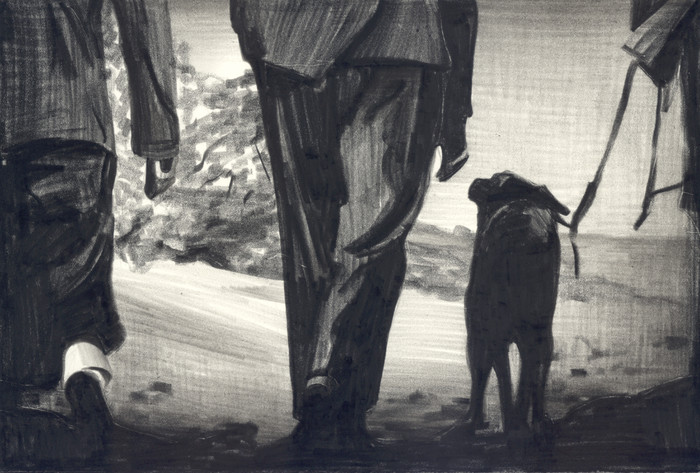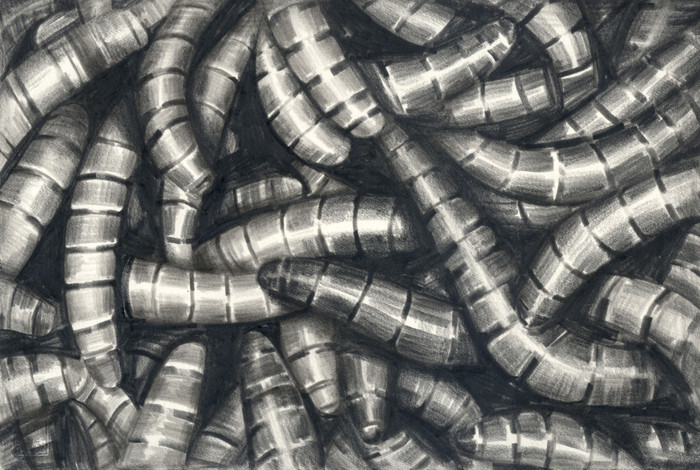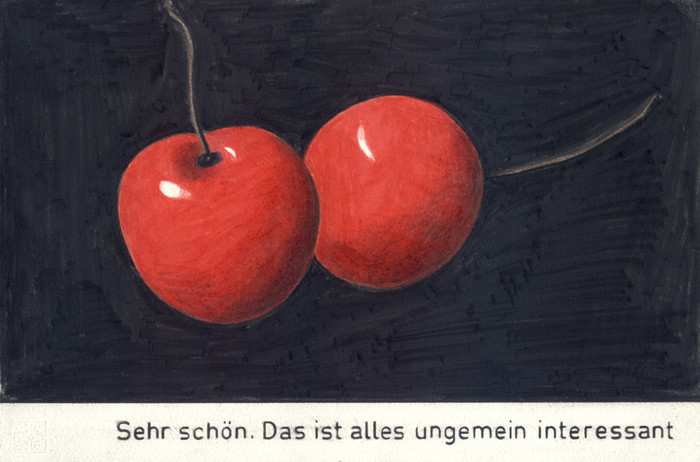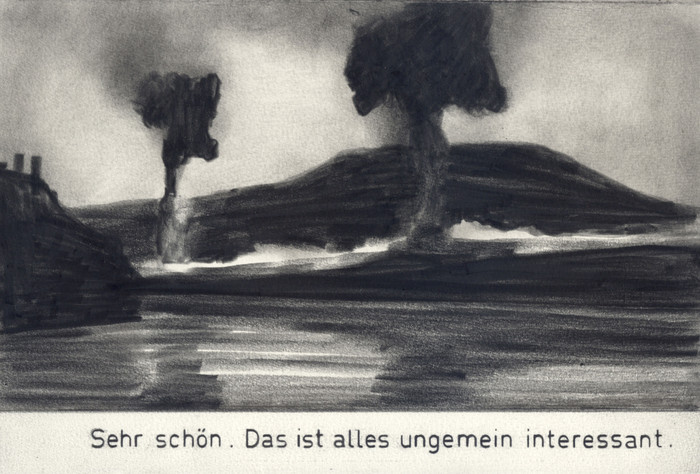Marcel van Eeden
02 Jun - 21 Jul 2007
Marcel van Eeden
“The Death of Matheus Boryna” 2 June to 21 July 2007
The drawings by Marcel van Eeden (1965) became known, above all, through his participation in the 4th Berlin Biennial (2006) and his solo exhibit “Celia” at Kunstverein Hannover (2006). Galerie Bob van Orsouw is showing several larger and smaller work cycles that have been produced for this exhibition, as well as single drawings that make up a total of over 100 works.
With a thoroughness bordering on pedantry and a rigorousness that recalls Conceptual Art, Marcel van Eeden continues to produce at least one drawing a day. Starting in the upper left of each leaf and ending at the lower right, he has filled more than 4000 sheets of paper over the past 13 years with a workaholic compulsion. The light-dark drawings, executed in soft-graphite negro pencil, all have the same format (19x28 cm) and are copied from found photographs. The originals taken from history and art books, archives, atlases, illustrated magazines, etc., date from the 1920s to 1965, the artist’s birth year. The protagonists, situations and events from this period are – by means of his artistic reconstruction – torn from the anonymous time continuum; once estranged from the original context, they are put into a new storyline visualized by the artist.
And yet Marcel van Eeden does not see himself as a chronicler. He has instead given his immense compilation of drawings the title of “Encyclopedia of My Death” and so provides an artistic anticipation of something that is necessarily inscribed into every existence: impermanence. “Half reporter, half archeologist”, van Eeden comes to terms with a period of time no longer re-capturable (before his birth) whose unfamiliarity stands, at the same time, for a future (after his death). In his transference of the photographic original into the medium of the drawing, the artist reproduces the motifs only in part; certain aspects are faded out while others are formally inflated. Thus existences are awakened to new life when the artist gives them a biography that he himself has invented for them. Such as the unknown botanist Karl McKay Wiegand who, on the over 100 sheets of paper shown at the Berlin Biennial, is promoted to a hyperactive protagonist (member of the literati, artist, extreme mountain climber, world champion boxer, husband to Liz Taylor, actor, entrepreneur), whom the artist ascribes with all the possibilities of an extraordinary life.
The adoption of a reality that is only available via pictures is permeated by irony, skepticism and Marcel van Eeden’s compulsion to produce pictures every day in order to get a hold on the nullity of existence through art. What amazes is how – with the diversity of subject matter and the frequent interplay between image and text plus the stylistic variety – the black-and-white, almost old-masterly coloration of the pencil work effects a kind of homogenization that makes all the drawings, so to speak, into elements in an uncompleted whole.
Birgid Uccia
“The Death of Matheus Boryna” 2 June to 21 July 2007
The drawings by Marcel van Eeden (1965) became known, above all, through his participation in the 4th Berlin Biennial (2006) and his solo exhibit “Celia” at Kunstverein Hannover (2006). Galerie Bob van Orsouw is showing several larger and smaller work cycles that have been produced for this exhibition, as well as single drawings that make up a total of over 100 works.
With a thoroughness bordering on pedantry and a rigorousness that recalls Conceptual Art, Marcel van Eeden continues to produce at least one drawing a day. Starting in the upper left of each leaf and ending at the lower right, he has filled more than 4000 sheets of paper over the past 13 years with a workaholic compulsion. The light-dark drawings, executed in soft-graphite negro pencil, all have the same format (19x28 cm) and are copied from found photographs. The originals taken from history and art books, archives, atlases, illustrated magazines, etc., date from the 1920s to 1965, the artist’s birth year. The protagonists, situations and events from this period are – by means of his artistic reconstruction – torn from the anonymous time continuum; once estranged from the original context, they are put into a new storyline visualized by the artist.
And yet Marcel van Eeden does not see himself as a chronicler. He has instead given his immense compilation of drawings the title of “Encyclopedia of My Death” and so provides an artistic anticipation of something that is necessarily inscribed into every existence: impermanence. “Half reporter, half archeologist”, van Eeden comes to terms with a period of time no longer re-capturable (before his birth) whose unfamiliarity stands, at the same time, for a future (after his death). In his transference of the photographic original into the medium of the drawing, the artist reproduces the motifs only in part; certain aspects are faded out while others are formally inflated. Thus existences are awakened to new life when the artist gives them a biography that he himself has invented for them. Such as the unknown botanist Karl McKay Wiegand who, on the over 100 sheets of paper shown at the Berlin Biennial, is promoted to a hyperactive protagonist (member of the literati, artist, extreme mountain climber, world champion boxer, husband to Liz Taylor, actor, entrepreneur), whom the artist ascribes with all the possibilities of an extraordinary life.
The adoption of a reality that is only available via pictures is permeated by irony, skepticism and Marcel van Eeden’s compulsion to produce pictures every day in order to get a hold on the nullity of existence through art. What amazes is how – with the diversity of subject matter and the frequent interplay between image and text plus the stylistic variety – the black-and-white, almost old-masterly coloration of the pencil work effects a kind of homogenization that makes all the drawings, so to speak, into elements in an uncompleted whole.
Birgid Uccia





